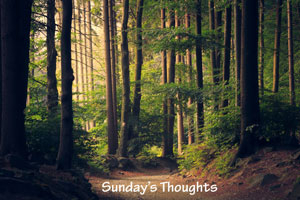I. Theme – The Trinity points to the mystery of unity and diversity in God’s experience and in the ongoing creative process

Holy Trinity– Anton Rublev (1430)
The lectionary readings are here or individually:
First Reading – Isaiah 6:1-8
Old Testament – Psalm 29 Page 620, BCP
Epistle –Romans 8:12-17
Gospel – John 3:1-17
Commentary by Rev. Mindi
The Call of Isaiah is dictated in chapter 6 with a glorious vision of God as a king seated on a throne surrounded by his attendants, the six-winged seraphs above the Lord. Even the seraphs seem not worthy of God, covering their feet and their faces, not daring to touch the holy space of heaven, not daring to look upon the face of God. Isaiah feels unworthy to speak in God’s presence, until the coal is pressed to his lips and Isaiah is purified. We are reminded through Isaiah’s vision that God is beyond our understanding, beyond our comprehension, but we do have a way of responding to God: through our answering God’s call, through our saying “yes” to God, to our saying, “Send me!” We may not understand God, but God understands us, and calls us into the world to carry God’s message.
Psalm 29 speaks of God as the Great Creator, whose voice carries the power of creation. God calls forth creation by speaking in Genesis 1 and the creative power of God’s voice is echoed here. It is God’s voice that calls creation out of the void, the deep, the darkness–and it is God’s voice that calls us out of the darkness of the world to witness to the light.
John 3:1-17 is the familiar story of Nicodemus which we read a portion of during Lent. Jesus speaks to Nicodemus about being born of the Spirit, and that God’s love for the whole world is so great that God has sent Jesus. We often read verse 16 without reading verse 17–that God did not send Jesus to condemn the world, but in order that the world might be saved through him. Using the Father-Son language, we understand the relationship of Christ to the Creator to be intimate, close, indwelling, along with the Spirit–a hint at the Trinity. While the Trinity is a concept never named in the Bible, we have inferred the triune relationship of God through scriptures such as these, knowing that we can never fully understand God, the Trinity helps us understand how God has been made known to us.
Romans 8:12-17 also infers the triune relationship of God by tying in our relationship with Christ as also being children of God, who have a close relationship with God to where we also can call God Abba (the Aramaic word for Father that Christ used indicates closeness). And we are led by the Spirit of God, who guides us in this world to the way of life.
Reflection and Response
We stand on holy ground. That truth resonates throughout today’s readings, reminding us of the essential sacredness of our experience, throughout all times and seasons.
The sacred character of human life springs from our intimate connection with the triune deity. God’s self-identification to Moses is not that of some distant figure, aloof from human life. Instead, he is the God of people: Abraham and Sarah, Isaac and Rebekah, Jacob and Rachel. If we substitute the names of our own parents or loved ones, we get the message. God is part and parcel of that most close and frustrating human relationship.
To see our ordinary days in this divine light takes a special gift of the Spirit. Elusive as the wind, it inspires and empowers us, enabling us to rise above our mortal limitations and place our lives in the context of the holy. The normal bounds of our thinking can be utterly shattered and expanded, just as Moses’ were when he saw a bush burning, yet not consumed.
The same irony is present as we realize that we are deeply human, yet somehow more than that. Redemption by Jesus implies that although we are doomed to die, we also inherit eternal life. The implications of that fact should brighten the dusty surface of our days.
We older folk become as skeptical as Nicodemus about the possibilities for rebirth. The noted teacher is quite willing to admit that the signs Jesus does mark him as one who lives in the presence of God. Yet the next step Jesus asks him to take is the difficult one: acknowledging that any person can see God’s kingdom as clearly, enter into this reign and be born of the Spirit.
In so doing, Paul says, we become joint heirs with Christ, suffering with him so that we can also share his glory. It is our union with Christ that makes all ground holy: our affections, our work, our suffering and triumphs.
Quietly consider:
If I am an heir of God, how then should I act?
Read more





 Trinity Sunday, the first Sunday after Pentecost, honors the Holy Trinity—the Father, Son and Holy Spirit. Although the word “trinity” does not appear in Scripture, it is taught in Matthew 28:18-20 and 2 Corinthians 13:14 (and many other biblical passages). It lasts only one day, which is symbolic of the unity of the Trinity.
Trinity Sunday, the first Sunday after Pentecost, honors the Holy Trinity—the Father, Son and Holy Spirit. Although the word “trinity” does not appear in Scripture, it is taught in Matthew 28:18-20 and 2 Corinthians 13:14 (and many other biblical passages). It lasts only one day, which is symbolic of the unity of the Trinity. 

